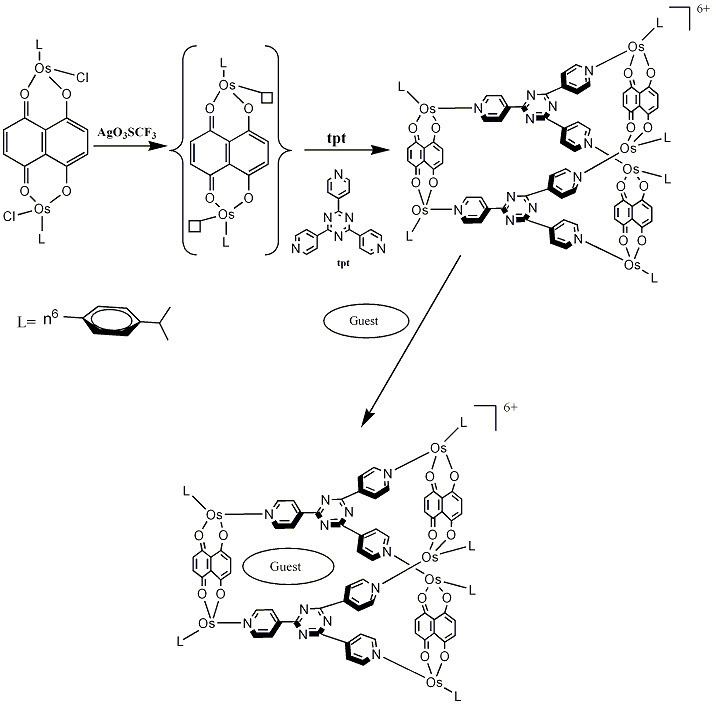 | ||
In chemistry, a coordination cage is a type of coordination compounds with cavities that can engage in host-guest chemistry. They usually consist of several metal centres linked with organic ligands.
Metallaprisms
Metallaprisms are a popular kind of coordination cage. In these compounds, six metal centres are linked with ligands to form an array of approximate D3h symmetry. They typically have conformationally-flexible cavities into which a variety of guest molecules bind.
The synthesis of some metallaprisms starts with [(η6-p-cymene)6Ru6(μ3-tpt-κN)2(μ-C6HRO4- κO)3]6+ using the linker of 2,4,6-tri(pyridine-4-yl)-1,3,5-triazine (tpt). Various guest molecules have been encapsulated in the hydrophobic cavity of metallaprisms. A few examples of guests are bioconjugate derivatives, metal complexes, and nitroaromatics.
